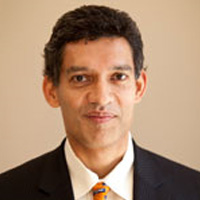Anticipation is running high that the Modi government will announce sweeping economic reforms in their first full-year budget, especially since their tenure so far has been bereft of any dramatic changes. In this article, Eswar Prasad, Senior Professor of Trade Policy, Cornell University, contends that Modi has laid a good foundation for reforms in his first nine months in office. But the hard work still lies ahead and time is running out.
Prime Minister Narendra Modi’s government is set to unveil its first full-year budget tomorrow. Anticipation is running high that, after nine months in office, Mr Modi will announce sweeping economic reforms — especially since his tenure so far has been bereft of a grand vision or any dramatic changes.
Instead Mr. Modi has made the basics of governance a priority. For instance, the Prime Minister counts getting government officials to come to work on time among his early successes. Mr. Modi has also launched a quiet fight against corruption by dismantling rules and regulations whose principal reason for existence was to allow corrupt bureaucrats to collect rents. He has focused on basic issues like improving sanitation and promoting broader access to the formal financial system.
Method to the apparent timidity on reforms?
Mr. Modi’s political instincts are finely tuned, and there may be method to his apparent timidity on reforms. His government could be laying the groundwork for substantive reforms that have a better chance of success thanks to a broader base of support.
Corruption and weak governance eat away at the fabric of society and disproportionately hurt the poor. The rich and politically powerful (who are usually the same) can find ways around this, but the poor have no such recourse. All of this naturally makes the masses deeply suspicious of reforms.
Market-oriented reforms have lifted tens of millions of Indians out of poverty in the past two decades thanks to faster growth. However, the perception remains that the benefits of reform were largely cornered by the political and economic elite. And it’s true that income and wealth inequality have widened.
So when Mr Modi talks about toilets as a matter of women’s dignity and safety, it touches a nerve. And of course good sanitation has implications for health and workers’ productivity as well. Access to bank accounts gives rural households better returns on savings and an avenue to elude rapacious moneylenders when they need credit.
Improving the working of government and reducing corruption is especially important to those who rely more on government services and cannot afford private alternatives. These issues touch the poor directly and in ways that abstract concepts about the benefits of pro-market reforms cannot.
What has worked so far and tasks ahead
Mr. Modi has also had more than his fair share of good luck. The central-bank governor he inherited, Raghuram Rajan, had already established his credibility with financial markets. Mr. Modi supported Dr. Rajan in his fight to control inflation and promote financial-market development, and maintained disciplined fiscal policy. Thus, the Modi government has improved macroeconomic stability - a bedrock of higher growth.
Falling oil prices have been a boon to India, which is a big net importer of oil. And, with India being the only major emerging market with positive growth momentum, foreign investors have been pouring capital into the country. The benefits of this good fortune need to be locked in — by shifting away from wasteful and inefficient subsidies, fostering a more predictable and transparent tax regime, and creating channels for foreign capital to flow into longer-term investments like infrastructure that will boost productivity.
Mr. Modi has been astute in giving India’s states more room to move ahead with some reforms. This fosters the right sort of competition among states and also creates a demonstration effect — if states that undertake reforms are able to show the benefits, this will increase support for reforms in others.
Mr. Modi still has before him the task of pushing forward a raft of major reforms that will benefit India but will be opposed by powerful vested interests that benefit from the existing state of affairs. India needs to change labour laws that have cosseted a small set of workers while holding back manufacturing sector growth and employment opportunities. It must discard red tape that deters business and enriches corrupt bureaucrats.
This budget should finally take tax reform by the horns, laying out a clear timeline for the implementation of the Goods and Services tax (GST), which will replace a hodgepodge of existing taxes. The government needs to build on the progress it has already made in shifting away from expensive and inefficient subsidies towards direct cash transfers. Disinvestment from state-run enterprises and banks has run aground in the face of concerted opposition. Reviving this programme would raise revenues that could be put to better use and, more importantly, improve efficiency and market discipline.
The economy and in particular the manufacturing sector are still hobbled by a woeful physical infrastructure and shortage of energy. Rather than relying on government intervention to solve these problems, Mr. Modi’s government should emphasise financial-market development that could better channel domestic and foreign capital into these sectors.
Without these reforms, India’s economy will not live up to its potential and will face rising social tensions. The foundation is in place but time is running out. Now Mr. Modi must decisively institute reforms that allow the Indian economy to fulfil its potential.
A version of this article has appeared in the Wall Street Journal.




 27 February, 2015
27 February, 2015 




Comments will be held for moderation. Your contact information will not be made public.